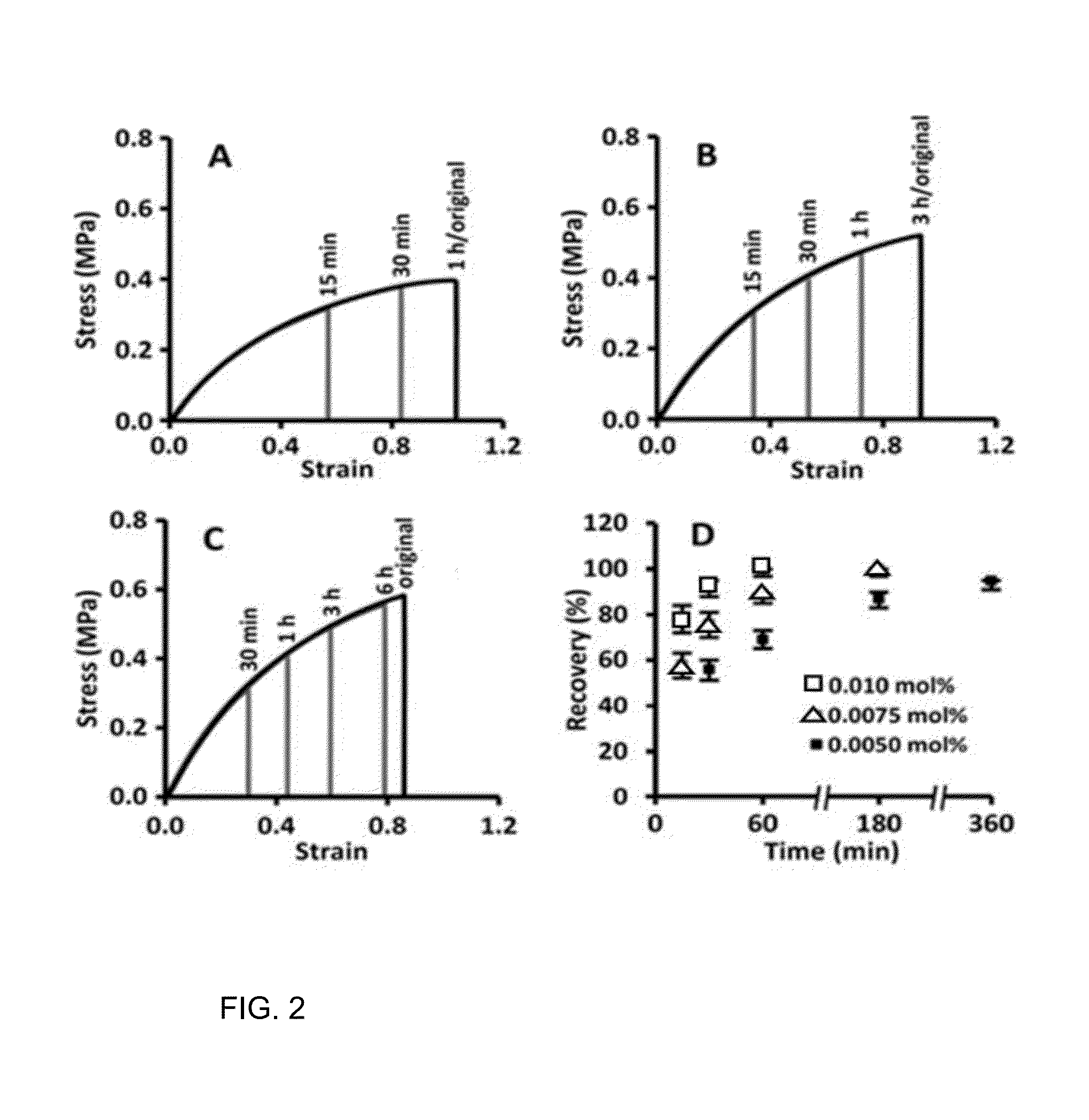Olefin metathesis for effective polymer healing via dynamic exchange of strong carbon-carbon bonds
a carbon-carbon bond and olefin metathesis technology, applied in the field of polymer materials, can solve the problems of relative weak self-healing of polymer gels, and achieve the effects of accelerating the self-healing process, and reducing the number of catalysts
- Summary
- Abstract
- Description
- Claims
- Application Information
AI Technical Summary
Benefits of technology
Problems solved by technology
Method used
Image
Examples
example 1
Effects of Ru Catalyst Loading on Healing Efficiency
[0031]Firstly, the self-healing efficiency of PBD network loaded with different amounts of the Ru catalyst (FIG. 2) was investigated. All cut samples were healed in mold at room temperature under 20 kPa of compression. At 0.010 and 0.0075 mol % Ru catalyst loading, the cut samples self-healed completely and recovered their original mechanical properties after 1 hour and 3 hours healing, respectively (FIGS. 2A&B). The quantitative healing was also evidenced by the observation that, during the tensile tests, the healed samples finally broke statistically at different positions instead of just at the healing interface. At the lowest catalyst loading (0.0050 mol %), the sample healed at a slower rate, but still recovered 95% of the ultimate tensile strength after 6 hours of healing (FIG. 2C). As expected, higher catalyst loading accelerates the self-healing process because more Ru catalyst should speed up olefin metathesis reaction at ...
example 2
Experimental Methods for Example 1
[0039]General. All the chemicals were obtained from commercial vendors and used as received without further purification. Polybutadiene (PBD) was purchased from Aldrich with an average Mw of 200-300 kDa, with 99% of cis-1,4 addition. Grubbs' second-generation catalyst was obtained from the Materia Inc. as free samples.
[0040]The Ru-loaded samples and Ru-free control samples were prepared following the same method as reported previously,(35) which is briefly described as follows. First, PBD was dissolved in dichloromethane (DCM) and then 1% mole (relative to the molarity of double bonds in PBD) of benzyl peroxide was added to the polymer solution. The solvent was then evaporated at room temperature and the residue was molded in Teflon mold and heated at 100° C. under vacuum for 6 h. The specimens (20 mm×10 mm×2 mm) were then swelled in DCM and washed thoroughly to remove unreacted BPO and any byproducts. Under cooling condition using...
PUM
| Property | Measurement | Unit |
|---|---|---|
| temperature | aaaaa | aaaaa |
| pressure | aaaaa | aaaaa |
| temperatures | aaaaa | aaaaa |
Abstract
Description
Claims
Application Information
 Login to View More
Login to View More - R&D
- Intellectual Property
- Life Sciences
- Materials
- Tech Scout
- Unparalleled Data Quality
- Higher Quality Content
- 60% Fewer Hallucinations
Browse by: Latest US Patents, China's latest patents, Technical Efficacy Thesaurus, Application Domain, Technology Topic, Popular Technical Reports.
© 2025 PatSnap. All rights reserved.Legal|Privacy policy|Modern Slavery Act Transparency Statement|Sitemap|About US| Contact US: help@patsnap.com



